THE MIDLAND RAILWAY STUDY CENTRE
Older News
Where some of the items which formerly appeared on the front page live on...
Our September Open Weekend had the theme of “Railway People”. The presentation for that event used some case studies to shine light on the less well known corners of the two main genealogy websites so far as railway records are concerned, as well as showcasing the range of staff records held in the Midland Railway Study Centre. We then focused on the stories of a few interesting Midland Railway characters. If this sounds interesting, you could have joined us on Saturday 13th or Sunday 14th September. The talks were at 11:30 and repeated at 14:30. The informal nature of the presentation means that it cannot be repeated online.
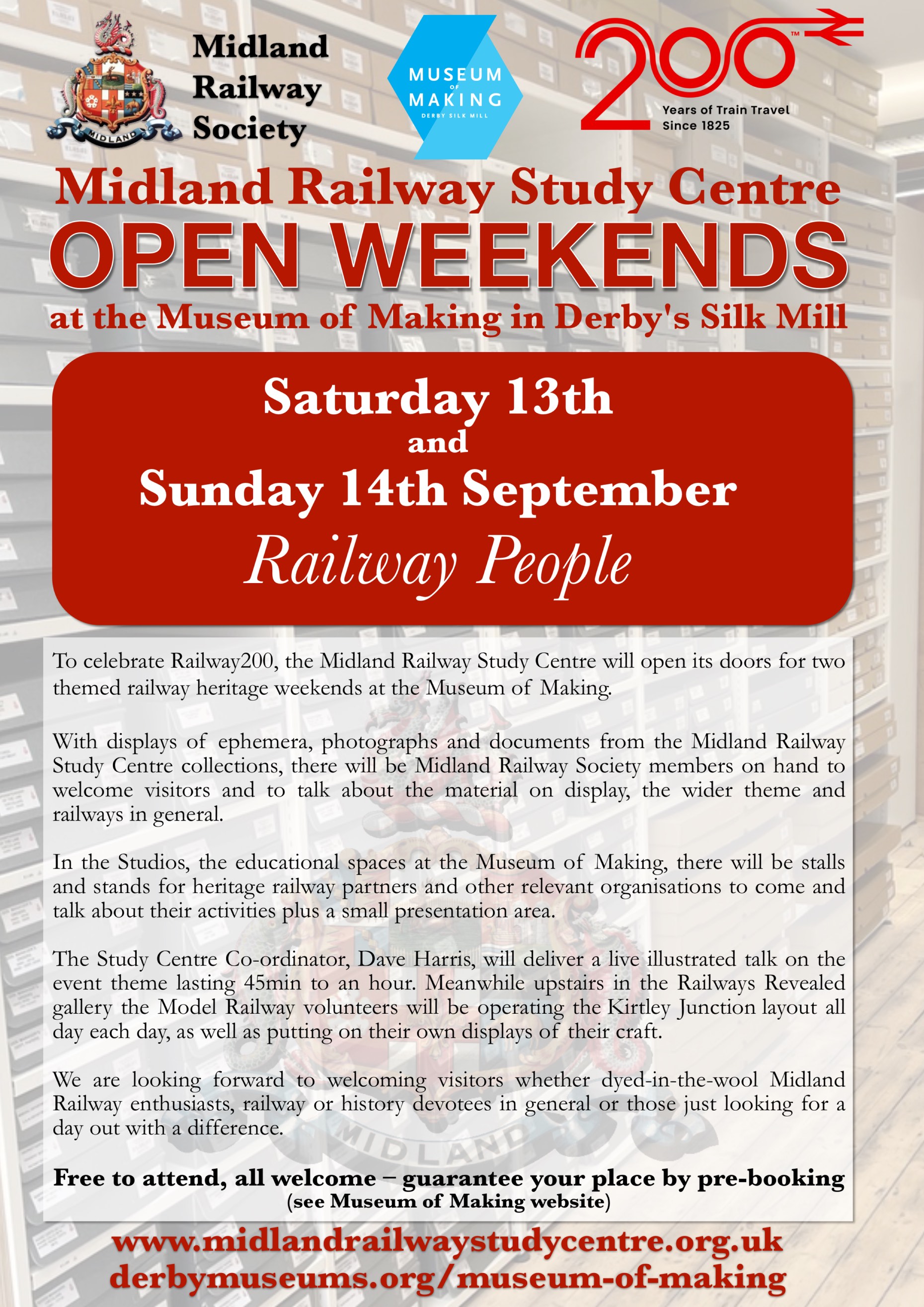
For those who were unable to attend our July Open Weekend (and, maybe, for those who did to perhaps enjoy again), we are delighted to make available this screencast of the Presentation of “How the Railways Came to Derby”. It is hosted on Youtube and so, even though we do not monetise our account, you may be subjected to advertisements which are of course entirely outside of our control.

Most of our celebrations for Railway 200 are now behind us — though we are still looking forward to supporting the Train Operating Company C2C who are the current incumbents of the former L.T.S. Section. This will take place in the New Year. Meanwhile, looking back... July saw the first of our two Midland Railway Study Centre Open Weekends and from 1st to the 3rd of August we were in the thick of The Greatest Gathering...
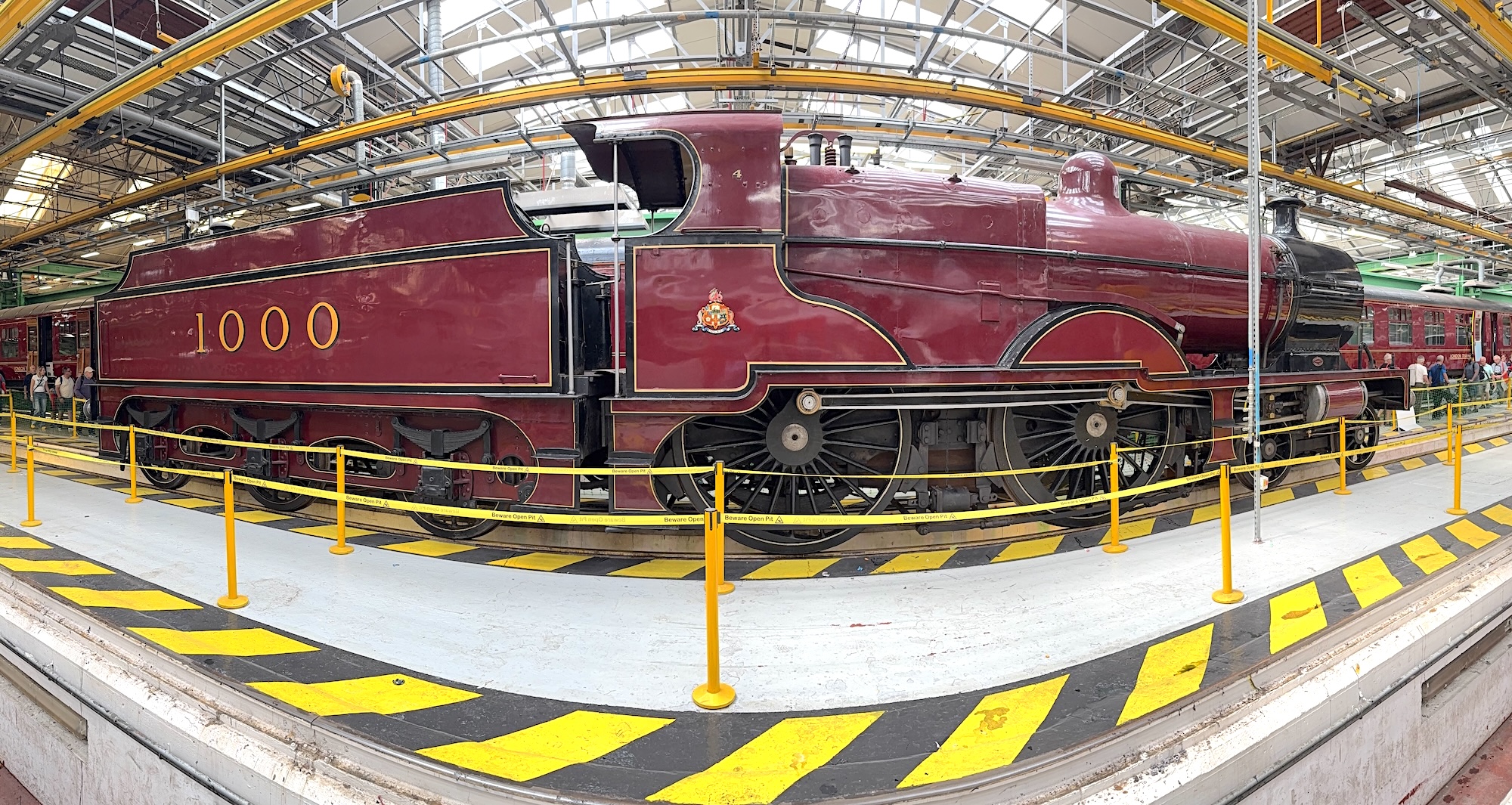
Midland Railway Compound No.1000, part of the National Collection, was displayed at The Greatest Gathering. Unfortunately, its position precluded a wide enough side view of the engine, hence the “fish-eye” effect to capture it all.
The Greatest Gathering at Alstom's Derby Litchurch Lane Site

The Greatest Gathering is almost upon us and preparations are at fever pitch (well, that may be a little hyperbole, but you get the idea!)
Given the whole purpose of the event is to celebrate the history of our railways, the Midland Railway Society, Derby Museums and many other similar organisations such as our line society friends, heritage railways and others are teaming up to help tell that story in the History, Heritage and Preservation Zone.
We are delighted to announce that (subject to any last minute logistical hitches, we will have a very special exhibit on our stand thanks to our wonderful Museum of Making partners. Meanwhile, here is some of the work we have done to help visitors to the Greatest Gathering understand how the site they will see in 2025 relates to the Midland Railway's Carriage & Works of the 1870s.

As a special treat for ticket holders to the Greatest Gathering, the Museum of Making is going to be open until 22:00 on Friday 1st August with the added attraction of a real ale bar! The Midland Railway Study Centre will also be open for visitors to drop in until late. Sorry, this event is now Sold Out — but is still very definitely happening!
An update for those attending on Friday evening: Two firkins of a specially produced beer by Dancing Duck Brewery will be available. Named after Derby's first station master and commemorating his infamously sticky end, the ale is named Rickman's Requiem.
It's going to be an exciting year of celebration. If you are one of the 12,500 tickets holders for each day of The Greatest Gathering, we will be seeing you there. We will be one of the first stalls you see as you enter the History, Heritage and Preservation Zone in U Shop. Please click the Railway200 logo below for more details about what's planned elsewhere.
A reminder of what Railway 200 is all about
Led by the Great British Railways Transition Team on behalf of the railway industry and heritage partners around the country, this will take the form of a wide variety of events and we will be doing our bit to mark this milestone. The Midland Railway Society in partnership with the Museum of Making will be taking part in this national celebration marking two hundred years of railways as we know them.
Railways came to Derby in 1839, but of course a constituent company of the Midland Railway — the Leicester & Swannington Railway — dates from 1832. Other Midland Railway constituents — the Ticknall Tramway and the Mansfield & Pinxton Railway — respectively trace their heritage back as far as 1802 and 1817, even earlier than the Stockton & Darlington. Never part of the Midland Railway but local to Derby, the Little Eaton Gangroad beats them all, opening in 1795. The honour of being the first “modern railway” falls to the Stockton & Darlington Railway, however, as when it opened on 27th September 1825, it was operated with steam locomotives rather than horse power.
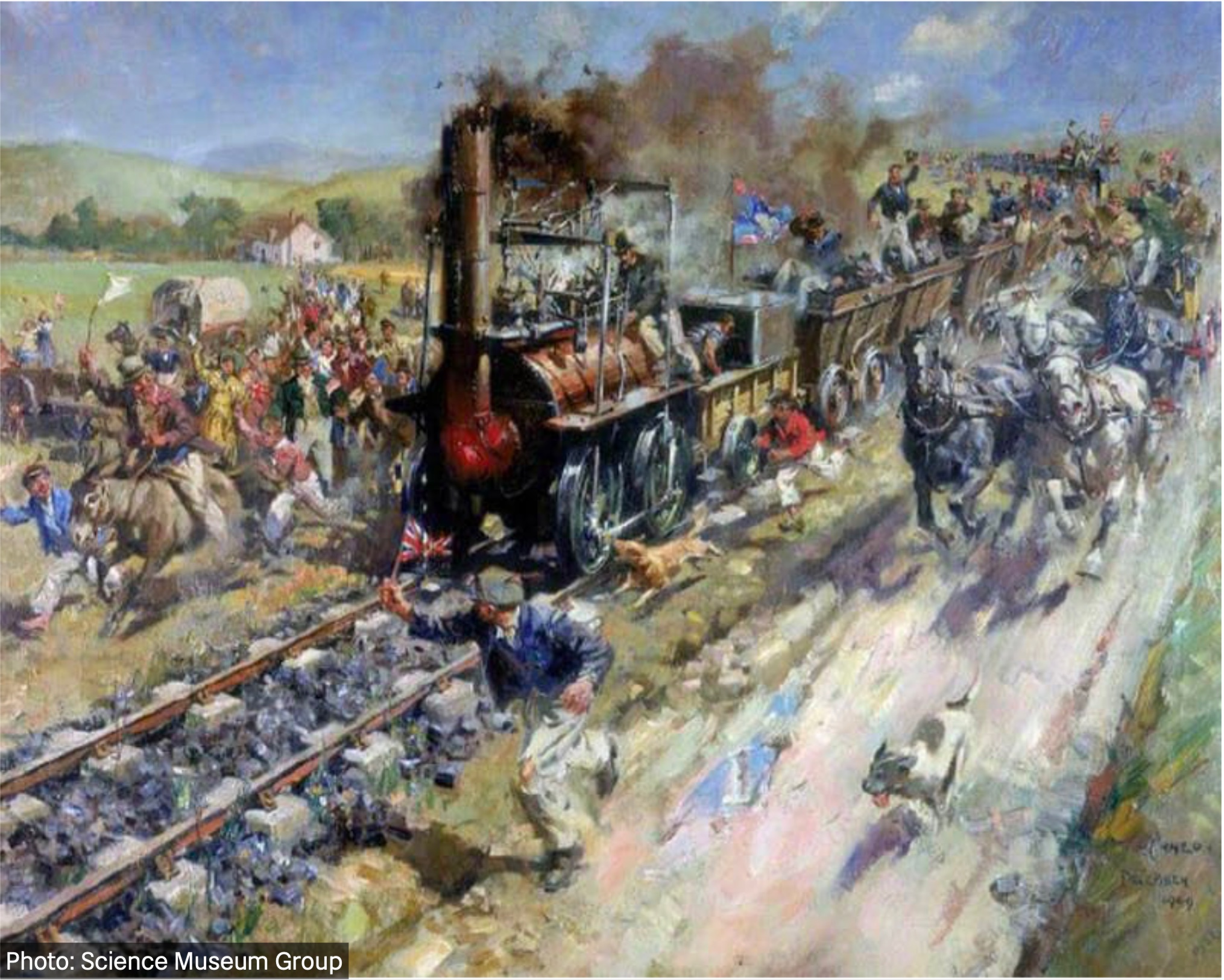
The Greatest Gathering — Fringe Event

Surely there is no one with the slightest interest in Britain's Railways (and perhaps even simply “no one”!) who is unaware of The Greatest Gathering happening at Alstom's Derby Litchurch Lane Carriage & Wagon Works from Friday 1st to Sunday 3rd August.
With 12,500 visitors descending on Derby each day, there is a lot else happening in the city to coincide with the event and keep railway enthusiasts interested. The Derwent Valley Community Rail partnership, in collaboration with several other organisations, is hosting an event in Derby's newly refurbished fantastic Guildhall Market over that weekend. The Midland Railway Society is supporting the event by displaying our information-rich series of pop-banners that provide a detailed look at many Midland Railway-related subjects.
If you are in Derby that weekend, please go along and have a look. While we are unable to guarantee a presence throughout the exhibition, there will be several of our members in attendance from time to time, so if you see a friendly face loitering, please do engage them in conversation.
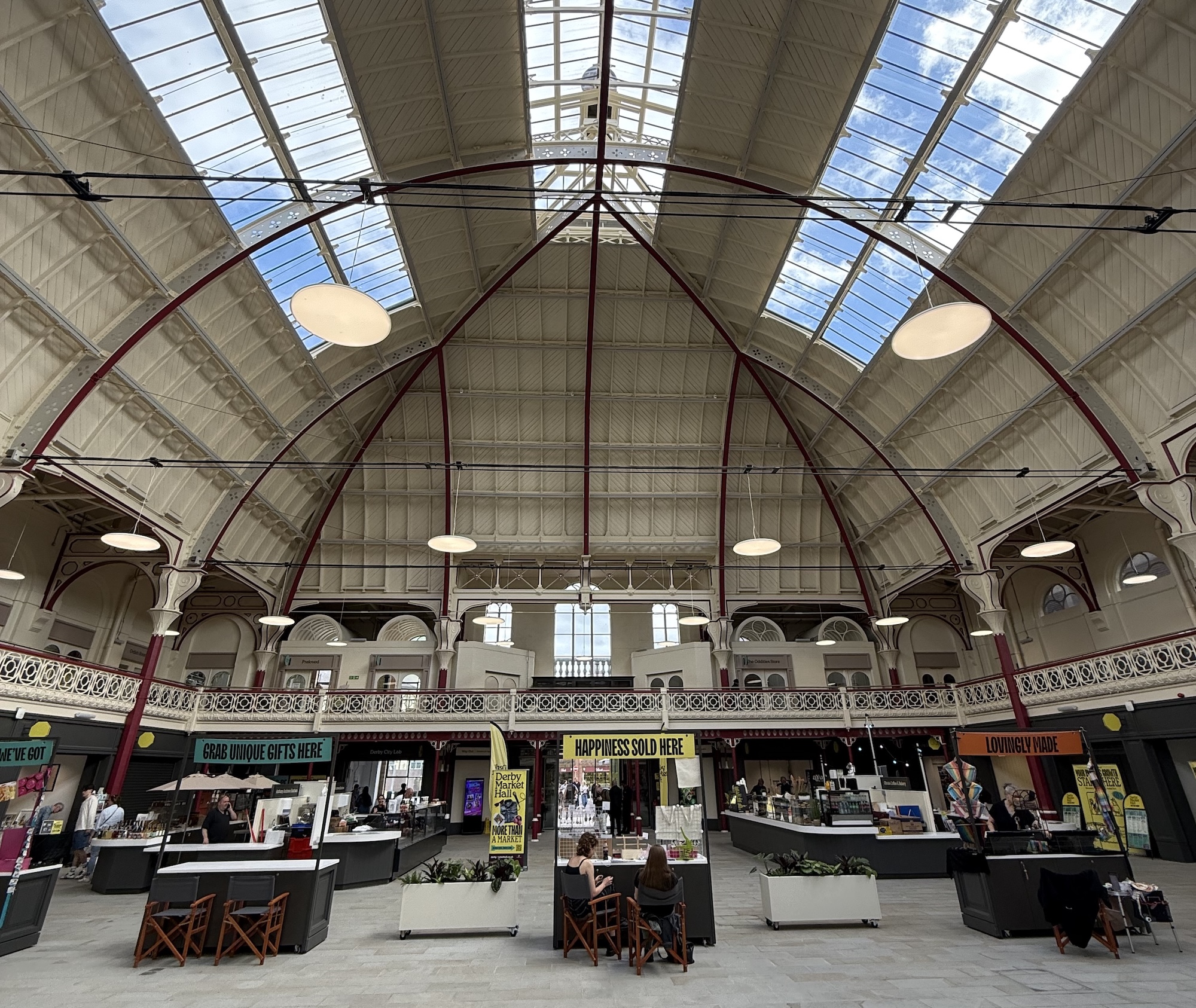


We are extremely grateful to the Chaddesden History Group, and Peter Cholerton in particular, for sharing a couple of their research papers relating to an often-overlooked corner of Derby's railway history — Chaddesden Sidings. So much so, we have created a page dedicated to the subject. As well as Peter's papers there are links to some of our own resources including the Midland Railway's detailed land plans of the sidings and surrounding area.

This view of Chaddesden South Junction signal box was captured by the late Pat Larkam as part of his extensive research into Midland Railway signalling in support of Derby Museums' famous 7mm model railway — the running of which can be enjoyed as part of the Museum of Making at 11:00 and 14:00 each day.
This Midland Railway “Type 4b” signal box replaced an earlier structure from 24th March 1907 and measured 32'x11"6'x12'. It survived the introduction of Power Signalling in the Derby area from 4th May 1969, but not the eventual closure of Chaddesden Sidings as a marshalling yard and was abolished on 17th July 1977.
Standing on this spot today would be looking straight into the Boots store on the Wyvern Retail Park.
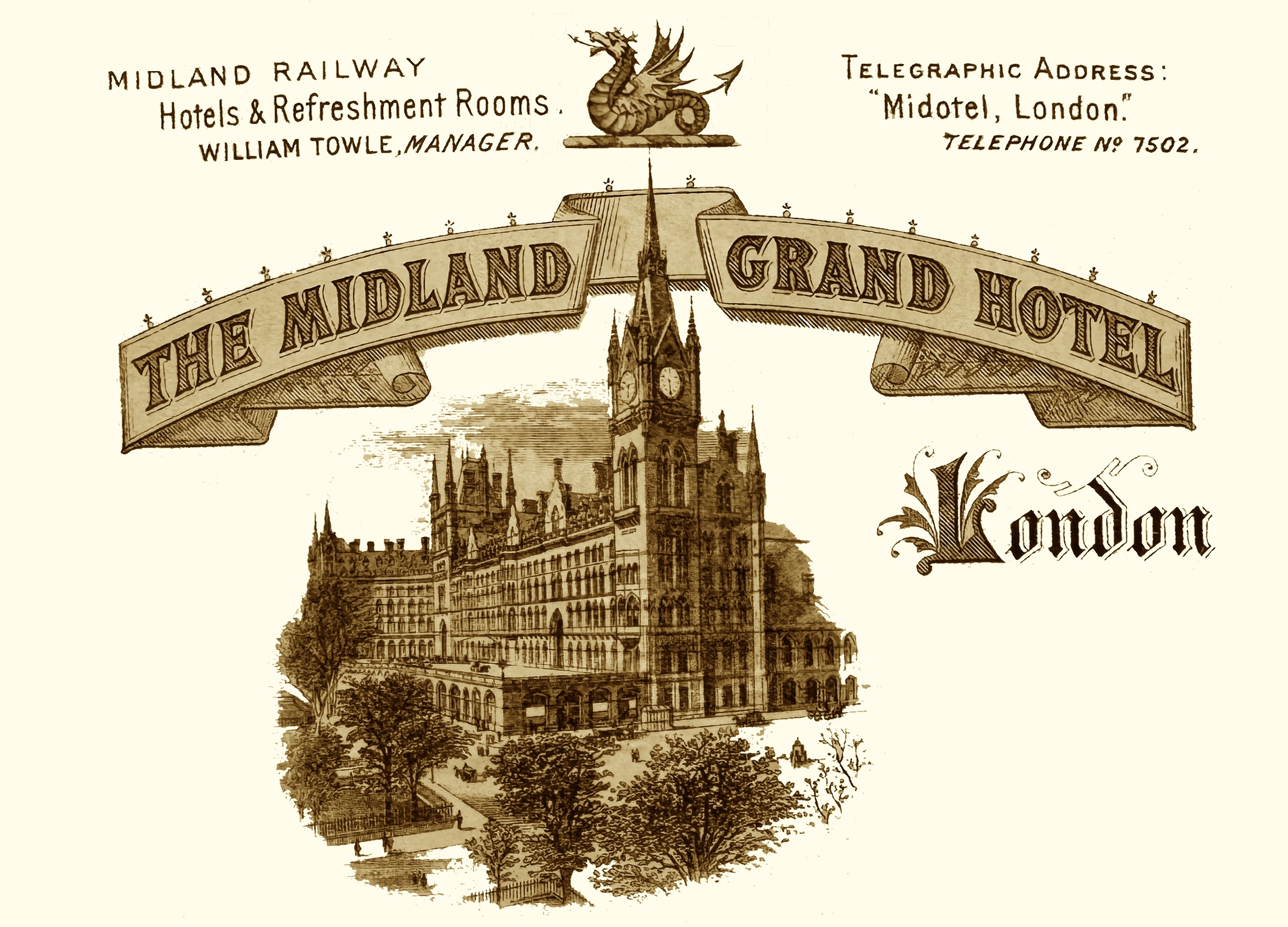
The Roundhouse Weather Vane

Would the gentlemen at the recent Open Weekend who was asking about the weather vane atop the Roundhouse clock tower at Derby, kindly make himself known once again through the contact details at the bottom of the page, please.
Meanwhile, enjoy this famous image of Chesterfield station in the 1860s...

Not just the Midland Railway
Midland Railway Society members will be well aware that Study Centre Volunteer (and much else!) Steve Huson writes a column in each issue of our Newsletter describing some of the recent acquisitions to the Collection — and indeed, Members of the Society can download a full list of each update to the Catalogue from the Members' Area to inform themselves of additions. However, there is a recent acquisition that it worth highlighting which is likely to be outside Steve's sphere as it is not Midland Railway... though as you will see, it does cover a Midland location.
This is a two-chains-to-the-inch land plan of the Wetmore area of Burton-on-Trent created by the North Staffordshire Railway. Anyone who knows even a little about Burton's railways will appreciate the wealth of history that this plan represents. As well as four pre-grouping companies (the Midland, North Staffordshire, London & North Western, and Great Northern Railways), several of the Burton brewery companies had running powers in the town for their own locomotives. This would have made the area covered by this plan an incredibly busy and fascinating piece of railway. Unfortunately, one of the biggest challenges represented by this plan would be to identify the few surviving buildings within its core area today (there are actually two significant ones!).
This beautifully colour washed plan is undated but based on its content has to be later than 1887 but earlier than 1910. It has survived in use by the British Rail Property Board until the 1950s. The Midland Railway created their own two chains to the inch land plan of this area (which can be downloaded here for comparison), as did the Great Northern Railway. In the latter case, this is part of a set of plans for their “Derbyshire Extension” which are held by the National Archives under their reference RAIL236/1017. Having compared the two, it is inescapable that the NSR version is identical to that of the Great Northern's except for the 'branding' in the top right corner — which will undoubtedly make for an interesting story.

Midland Railway Estates Collection

An extract from Estates Plan ref: 88-1997-5_147.5 “Millers Dale Temporary Arrangement to be Brought Into Use” from July 1905, one of several plans relating to the widening and provision of the second viaduct there in 1905.
A hugely significant collection within the overall holdings of the Midland Railway Study Centre are the Estate Plans. Developed by the Midland Railway from the 1880s in their own “off-site store” at Ambergate, then added-to over the years by the LMS and British Railways, this treasure trove found its way to Derby Museums in the 1970s. Since then the collection has been conserved and catalogued but has only been available to in-person visitors to the MRSC, and even then only by ploughing through the paper-based catalogue.
Therefore it has been a long-held ambition of ours to make this collection fully available in digital form through the web site. Work to scan the plans and digitise the catalogue entries for the collection has been going on behind the scenes for several years now (and a really big thank you to our volunteer, Tony, for all his hard work toward that objective).
Although there's still a lot of work to do, we estimate we are about two-thirds of the way though and so the time is right to release that first tranche of plans — which amounts to over 850 individual items — for visitors to the Midland Railway Study Centre web site to search, view and freely download.
The new records have been incorporated into our online catalogue and will show up in standard search results. You can also filter your results by selecting “Plan (Estates)” in the 'Categories' drop-down list. A link to download the high resolution file will appear in the results. If any of the links or thumbnails fail to load, or you encounter any other issues in searching or using the catalogue, please don't hesitate to let us know via the link below. In fact, any feedback at all will be welcome.
As with all our Midland Railway era downloads, you are free to do with these plans what you wish provided you don't make a charge for reuse. Also, please credit us appropriately if you redistribute any of them to help others find our collection. We hope this will significantly add to the breadth of results researchers find here, particularly in respect of geographic subjects.
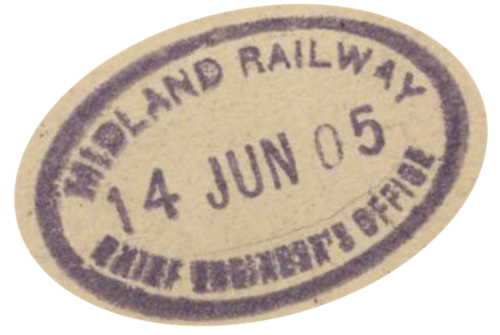
Work continues to scan and catalogue the remainder of the collection and we hope to have a further batch uploaded within a few months. The end of this project is in sight.
If you find these, or any of the resources we provide on this web site useful, then please consider making a donation to top up our conservation fund. There's a PayPal donate button on several of our pages, like this one.

THE SIR HENRY FOWLER COLLECTION

We are delighted to have acquired a substantial collection of photographs, papers and other ephemera relating to the life, work and times of Sir Henry Fowler, the Midland Railway's last Locomotive Superintendent (then styled “Chief Mechanical Engineer”). Now all sorted and fully catalogued, it is available for reference and here we present some of the highlights of the collection for you to enjoy...
Items below here date from prior to June 2024 -- all retained for archive purposes!
A quick tidy up
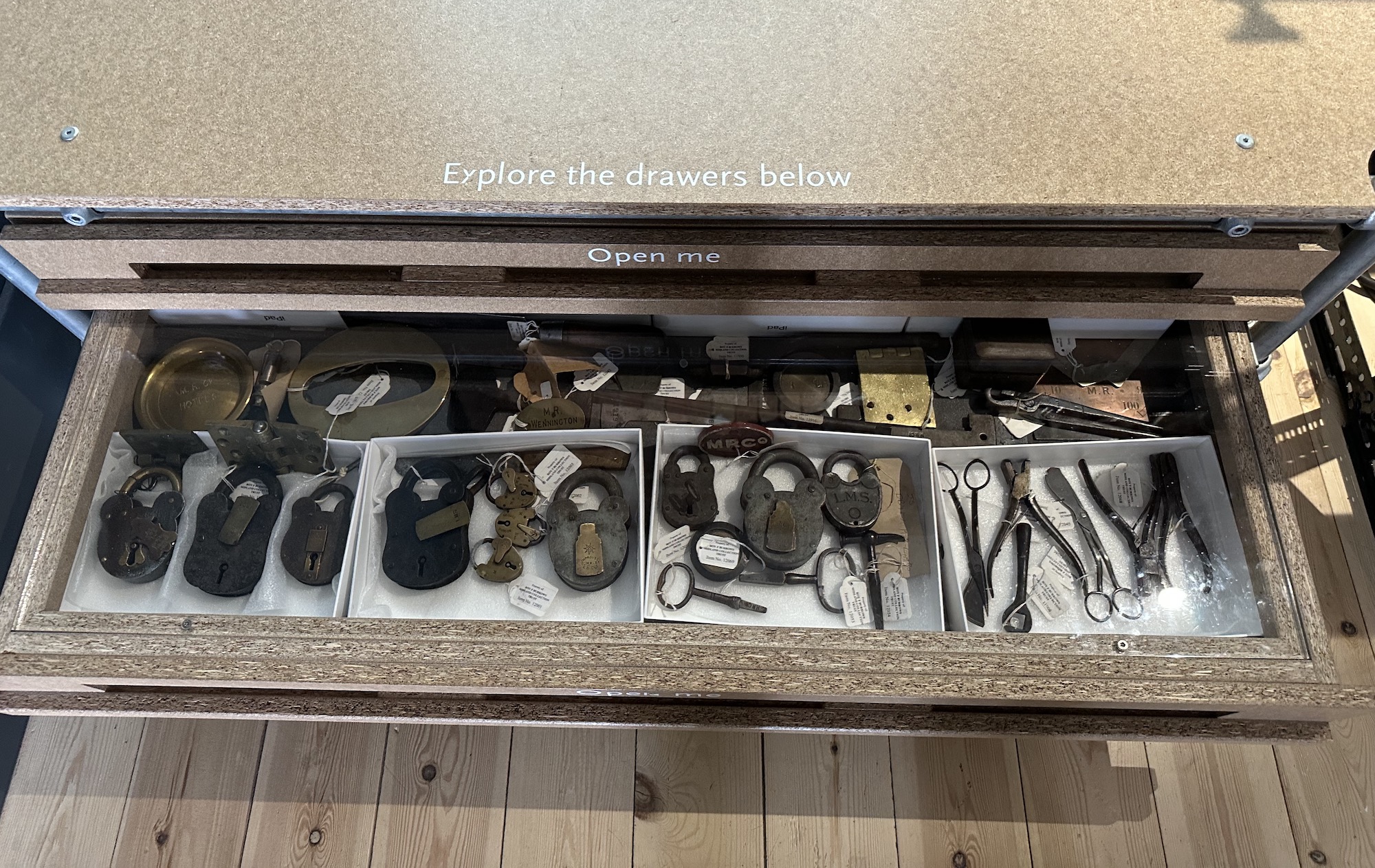
If you have visited the Museum of Making and spent time looking around Assemblage (and if not, why not?!), you may well have had a look inside some of the drawers which line the gallery. Many small items from the Roy F Burrows Collection are stored in these drawers. As with the rest of the Assemblage, as this is storage rather than conventional display space, no attempt is made to provide any interpretation (although we try to make sure our RFB item number label is visible so you can use this web site to look things up if they catch your eye). Over two-plus years that the Museum has been open, we have become somewhat concerned by the fact that when the drawers are re-closed, the momentum results in many of these items steadily finding their way to the back of the drawer. Frankly, the result is that the contents quickly become quite a mess.
Volunteers at the Museum have come to the rescue though, and have used an innovative piece of recycling in the process. Education is a huge part of what Derby Museums do and as a result, over the years they have acquired quite a number of iPads and other tech, which are used by pupils in and around the building. Meanwhile, the empty boxes these devices come in have been amassing and taking up space. Inspiration struck recently in that these sturdy and cushion-lined boxes are ideal for holding museum artefacts. So, and at the risk of inadvertently providing product placement for a fruit based computer company, these boxes have been pressed into service as trays for objects — with the happy outcome that everything now remains in place, no matter how hard visitors close the drawers.
Collections Revealed: Midland Railway
Making collections accessible from anywhere.
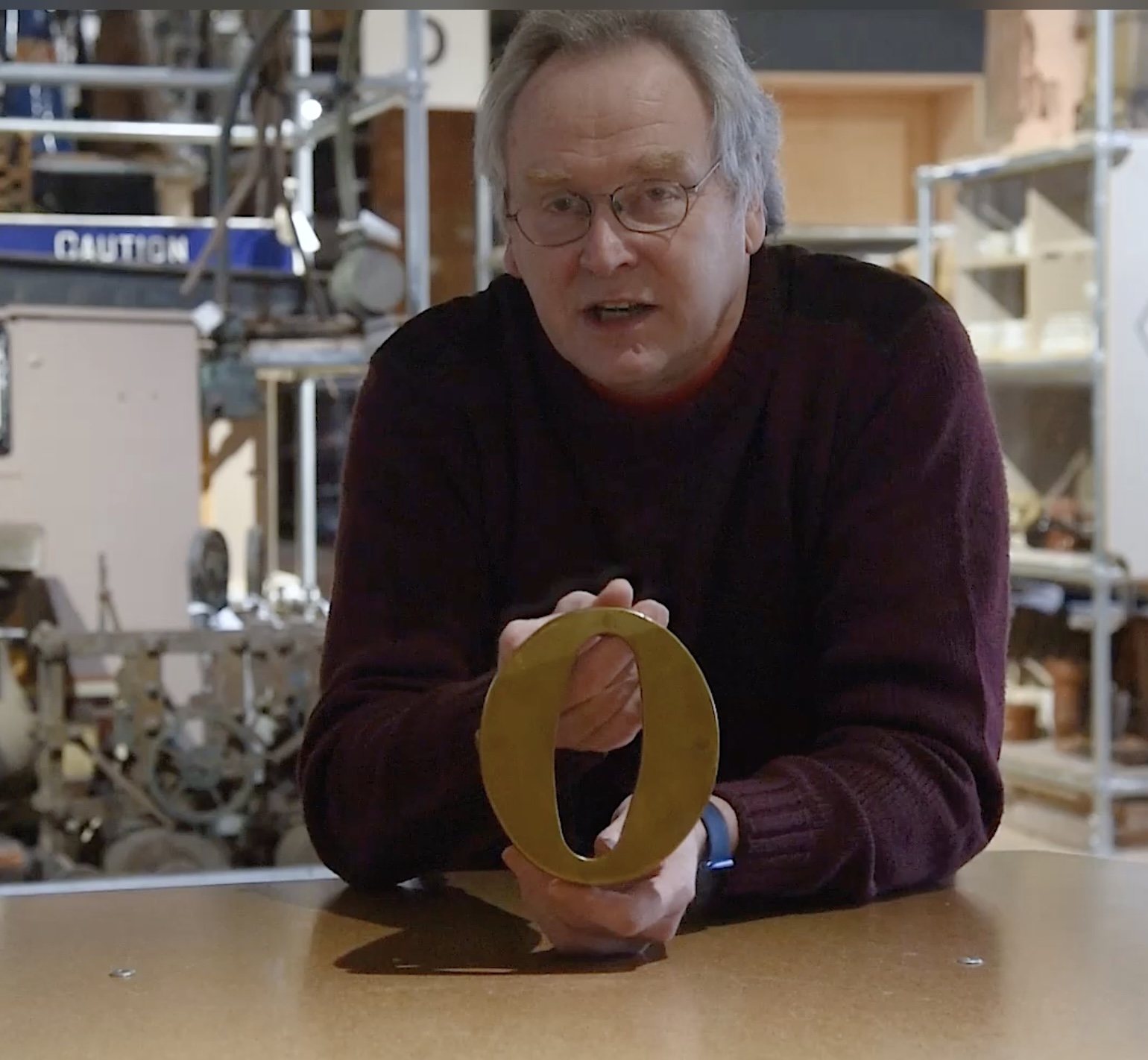
Earlier this year the Study Centre Co-ordinator was dragged kicking & screaming in front of a camera to talk about some of his favourite objects from the collection which are available on the Museum of Making's Assemblage.
Thanks to some good editing, most of the fumbled lines and indecisive stuttering have been consigned to the cutting room floor and the end result is something he can just bear to watch. We hope that you will be equally entertained by what the Museum have managed to create and will invest five minutes of your time...
The Study Centre leaflet
The Midland Railway Study Centre leaflet is available to download.
It has been designed to compliment Derby Museum's house style while retaining its own "look & feel" to reflect the co-production nature of the Midland Railway Study Centre.
The A5 bi-fold document introduces the Study Centre and the history of the Roy F Burrows Midland Collection, as well as providing a brief introduction to the Midland Railway itself. Of course its primary role is to point people toward our resources... such as this web site!
If you'd like a look yourself, it can be downloaded as a PDF by clicking on the image to the right, or you can pick up a copy in the Museum of Making.
Storm Franklin

The third in a trio of named Atlantic storms to hit the UK in late February certainly left its mark on Derbyshire. As the floodwaters ran down from the Peak District on the Monday morning, the River Derwent running through Derby city centre and past the Silk Mill rose rapidly into a raging torrent. The flood defences largely did their work and no lasting damage was caused. It certainly looked spectacular though. The Museum of Making was closed to the public anyway with it being a Monday, but interruption to services (i.e. drainage and the lifts) led to all but essential staff leaving at lunchtime.
You can watch a short video of the scenes from and around the Silk Mill on this YouTube link.
21FEB2021
Marking the Centenary of the Death of Newton Hibbert
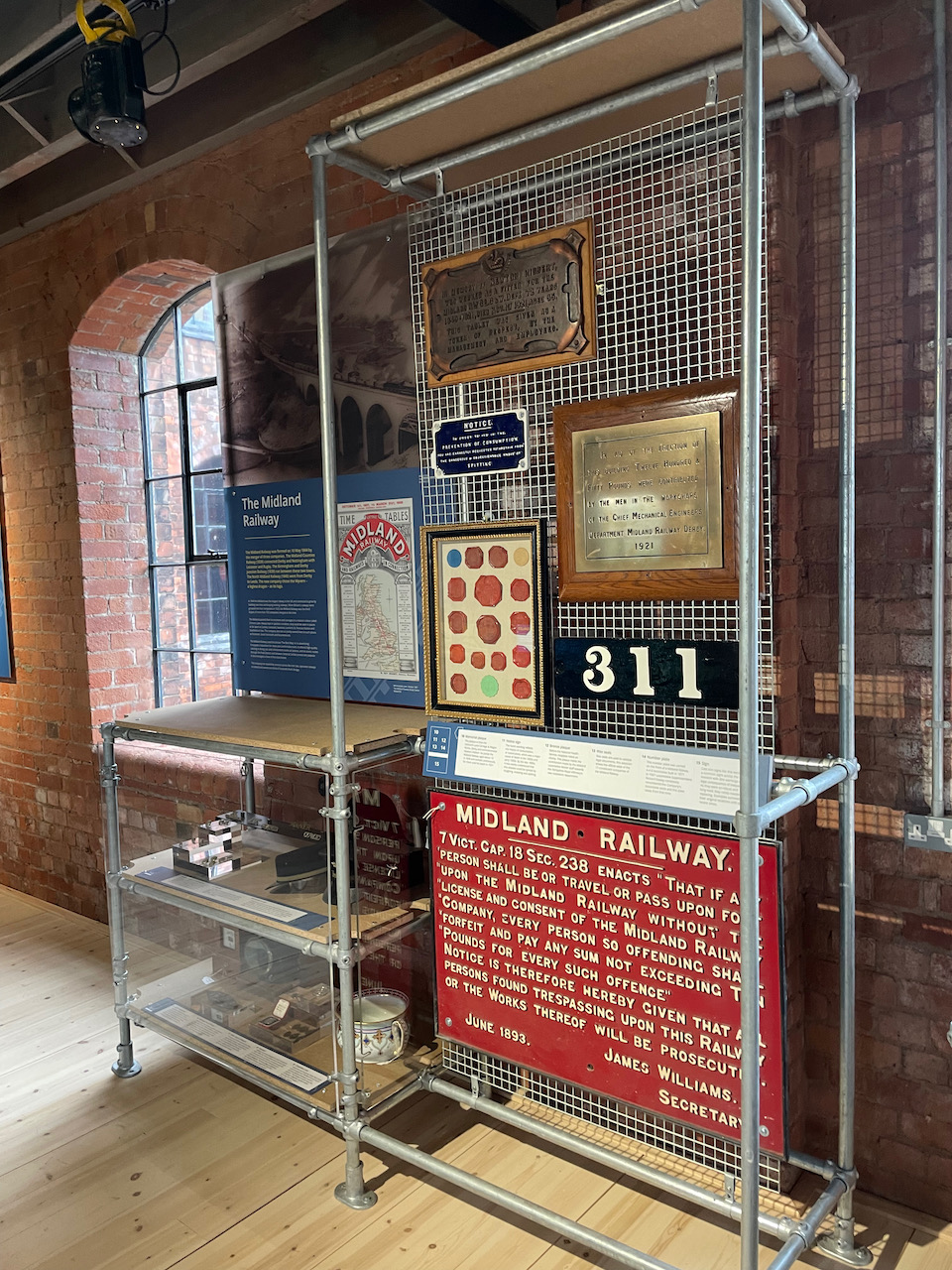
You may be wondering who on earth was Newton Hibbert? He is commemorated on a plaque now prominently displayed in the Railways Revealed gallery of the Museum of Making. His remarkable story is celebrated here, but in short, he was very likely the longest serving railwayman in history.
Monday, 1st November 2021 marks 100 years since his death. His memorial plaque is special to us at the Midland Railway Study Centre as it represents not just this one man, but in some small way, all the tens of thousands of men (certainly not overlooking the small but notable number of women as well), many of whom similarly dedicated most or all of their working lives to the service of the Midland Railway.
For that reason we held a small ceremony on the anniversary of his passing.
Anton Rippon has written a lovely piece about Newton and the centenary of his death for the Derby Telegraph “Bygones” column which is well worth a read. Thank you Anton.
01NOV2021
Spirits of the Midland Railway
A special video presentation

One of the incalculable ways in which 2020 has been, shall we say, 'unusual', is that the Midland Railway Society was forced to hold its Annual General Meeting in October, using the novel medium of video conferencing software. In lieu of the traditional presidential address, a specially produced video was premiered to those members “in attendance”.
The video was titled Spirits of the Midland Railway and features a selection of Midland Railway staff who are buried in Derby's Nottingham Road Cemetery. It runs for a little under 25 minutes and visitors to this web site are most welcome to view it on Youtube if you wish.
WINGFIELD STATION
Historic Building Record
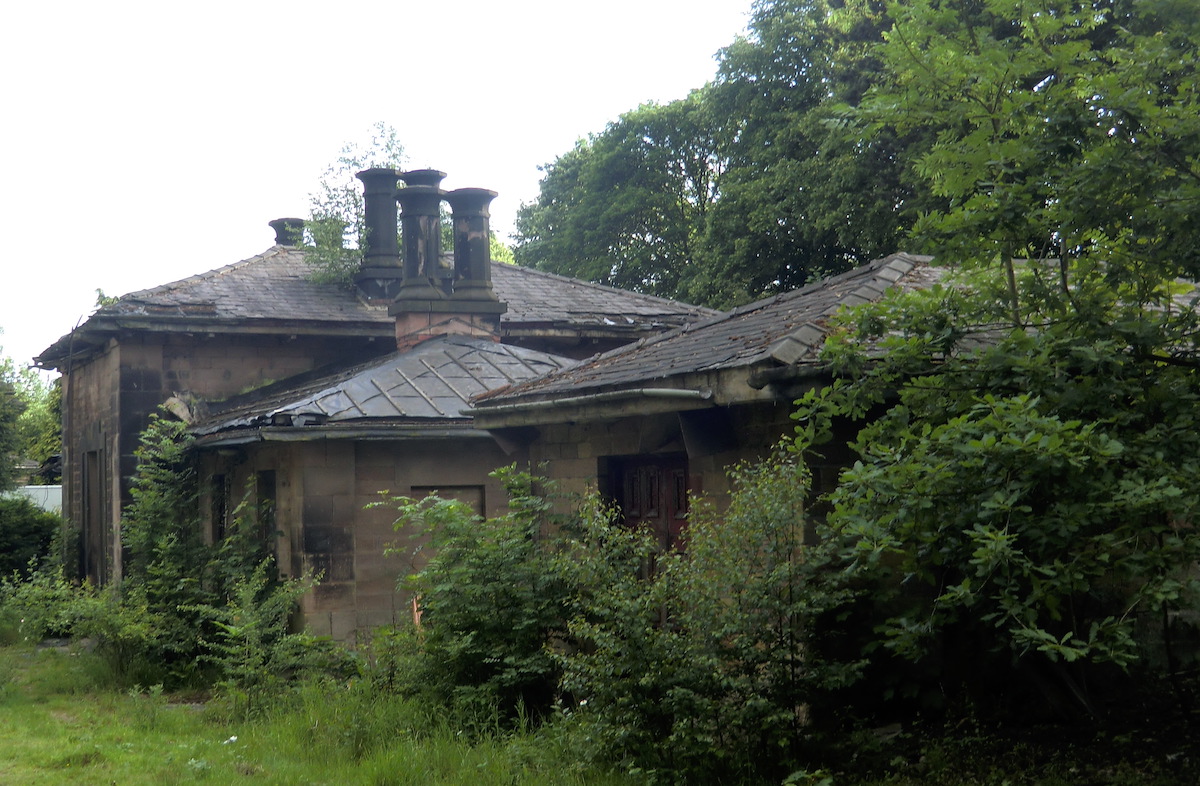
The formal Historic Building Record commissioned by Derbyshire Historic Buildings Trust was published on 8th October 2021 by its author, Mel Morris Conservation. We are delighted that the Study Centre has been chosen to be a digital repository for Historic Building Record.
Read more and download a copy, as well as enjoying a couple of photographs of the station before work started to save it — exclusive to this web site — on our Wingfield Station page.
Official Postcards of the Midland Railway
The Midland Railway Society is delighted to publish as a free download a booklet titled The Official Postcards of the Midland Railway.
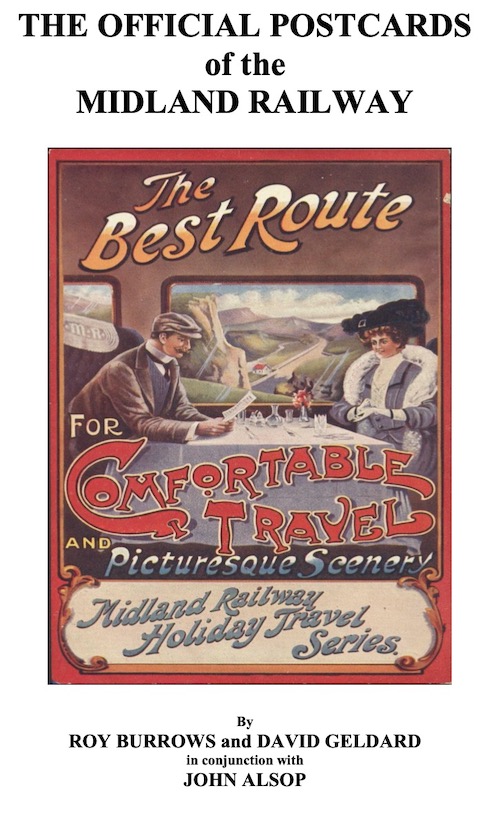
This 40 page, well illustrated, work traces the general history of the postcard and moves on to follow the evolution of Midland official cards from 1896 through to the grouping. It deals in detail with the early map cards, the very attractive sets of cards featuring views in Midland territory, cards promoting the company’s new steamer services from Heysham and those featuring the company’s hotels. A section is dedicated to the tricky subject of overprints on card backs to make them suitable for correspondence from the various departments of the Midland Railway.
To find out more and download a copy, please visit this page.
Sample images from the Engineer's Department ledger (Item No. RFB28524)
We have created a new page to showcase some of the wonderful drawings which are coming to light during a project to conserve a terribly time-worn Engineer's Department Ledger. The painstaking task of carefully separating the pages and transferring them into archival sleeves is ongoing. Meanwhile this sample of drawings it contains should delight all with an interest in Midland Railway history.
21DEC2017
The Midland Railway staff of Ashchurch Junction
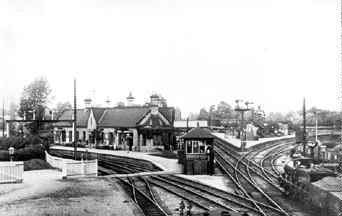
We are absolutely delighted to host the fruits of painstaking research conducted by Brian Harringman, which details the men and women who were employed by the Midland Railway at Ashchurch in Gloucestershire. Using a wide variety of both genealogical sources and railway documents, Brian has built up a comprehensive record, not only of the individuals concerns, but also of scope and nature of the work they were engaged in. Ashchurch was a significant location for the Midland Railway, not only as a junction, but as the site of one of the Company's most important Provender Stores. Even if you don't have a direct interest in the Ashchurch area, Brian's research provides an invaluable insight into working methods typical of rural railway stations in the late 19th and early-to-mid 20th centuries. Like all research, this project can never be declared "finished", but it has clearly long reached the stage that it is deserving of sharing.
Funding secured for the Silk Mill redevelopment
Derby Museums announced today that the Heritage Lottery Fund have given final approval to the grant of £9.4M, the largest element of the funding needed for the redevelopment of the Silk Mill into the Museum of Making. Along with £2.5M from Arts Council England and other funding toward the the £16.4M overall cost, we can now get going with the hard work...
05OCT2017
A bit of a spat..
.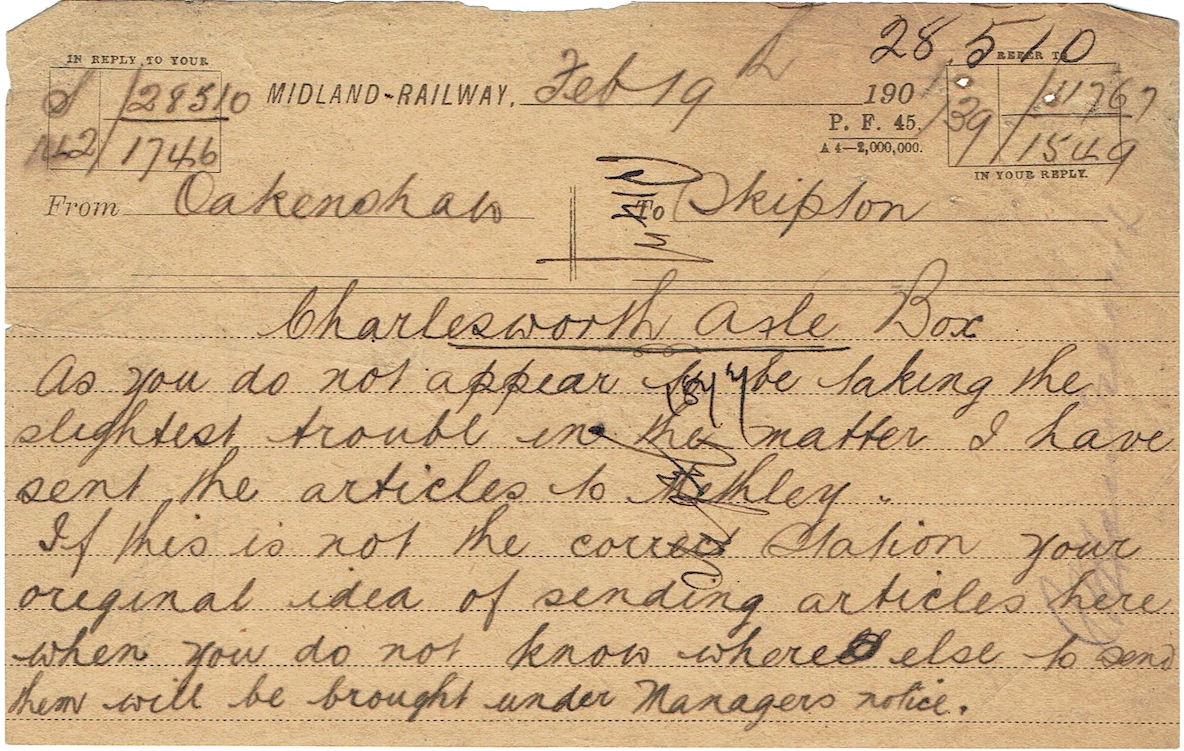
The Victorian railway is said to have had a bureaucracy second only to the civil service. Frankly, with the myriad of passengers and goods of near-infinite variety moving around the network, all to be accounted for and revenue collected (or compensated when things went wrong), I think the railway's army of clerks would have run rings round their government counterparts. Here's an example of when things didn't go quite right, and indeed got rather terse. Click or tap the image for a larger version.
The Countdown has begun...
In 2018 major building works, taking approximately 18 months, will begin at Derby's Silk Mill. This will be a complete refurbishment of the fabric of the World Heritage Site, repairing many years of enforced neglect, removing asbestos, installing new floors & environmental controls and generally making the building fit to house a 21st century museum. Before this work begins the building has to be emptied. Completely. Everything from the model railway, the huge Buckton crane, the RB211 jet engine and the entirety of Derby Museum's extensive collections. And us. All will be temporarily rehoused.
While we are in our temporary home we will have access to all our documents and so will be able to offer a service of some form. The exact details of this are still being worked out. However, during the period of “the Decant” from the Silk Mill, everything will be in packing cases and completely inaccessible.
The implication of this is such that from late September 2017, for up to six months, the Midland Railway Study Centre will be completely closed — both to visitors and, for all practical purposes, to on-line enquiries. In the latter case we will continue to do what we can, utilising resources which are already digitised, but this will be only a small amount of what is normally available to us.
If you are considering any Midland Railway related research in the coming months or into 2018, now is the time to do it!
To facilitate this we are making study appointments available every Wednesday up to the point we have to close. The exact closure date is still uncertain, but is likely to be late September. As usual we have to insist on prior appointments for visiting to ensure we have volunteers available to help you — please don't just turn up. Contact details are at the bottom of each page on this site.
The logistics of the Decant will undoubtedly be very labour intensive. If you fancy helping out, either in the short term for us in the Midland Railway Study Centre or, even better, throughout the process of emptying the whole of the building, please get in touch. You will be made very, very welcome!
APR2017
Understanding Staff Records
Glynn Waite has very kindly shared a paper he has written which guides researchers around the many & varied potential pitfalls which exist within the National Archives’ “RAIL491” series of Midland Railway staff records. Drawing on his vast experience, Glynn provides illustrated examples which explain the often mysterious shorthand that the Company’s clerks used, and lead the reader through the records. With particular emphasis on the Coaching Department, he gives a comprehensive overview of the scope of the records, and just as importantly, highlights the gaps which exist. This is sure to be an extremely useful resource for family historians searching for details of their ancestor’s career on the Midland Railway.
Midland Railway Timetable Finding Aid
As a project resulting from our Partners in Excellence collaboration with the National Railway Museum we are delighted to announce the availability of a Finding Aid for Midland Railway Timetables. This document details all known examples of Public and Working Timetables held by ourselves, the NRM and the National Archives at Kew. Thanks to the work of David Geldard in particular, we hope this will be a really useful guide for researchers.
28JUL2017
The MR Estate Agent Plan Collection
We are delighted to announce the realisation of a long-held desire to make the catalogue for the Estate Agent plan collection available. The finding-aid for this very important collection of mainly rolled plans is a notable omission from our on-line catalogue due to it being paper based. Using the sequence of the Midland Railway Chronology by John Gough and his team for its structure, each sheet describes the nature and scope of a particular plan. Despite its necessarily low-tech nature, it is a system which works well, though its major shortcoming is that — until now — it has required being present in the Study Centre to use it. Now, however, the index sheets have been scanned as a series of PDFs with each file representing a section of main line or branch.
14APR2017
Carriage & Wagon drawings for modellers
Our Carriage & Wagon collection comprises many hundreds of drawings created by the Midland Railway's draughtsmen at the Company's Litchurch Lane works here in Derby. These drawings are invariably works of art in their own right and are not only of complete vehicles but many components too. When BREL took over the Works in the 1970s they inherited what appeared to be a drawing of every type of vehicle produced at the Works since it opened in 1875. Luckily for us, they had the foresight to contact Derby Museum when they wanted to create some space, rather than have a bonfire!
Since then this collection has been carefully sorted and catalogued. However, modellers and others who wanted to utilise this invaluable resource have been poorly served in that getting a quality copy of one of these drawings has always been a technological challenge.

One of the many benefits being realised from the Midland Railway Society's investment in a wide format scanner last year is the ability to make elements of our collections much more widely available. Given that providing resources for model makers has always been an important part of our activities, we are delighted to make a new area of this web site available especially for modellers.
We have scanned a series of what we consider to be some of the more popular drawings from our Carriage & Wagon collection available for download. Whilst this is primarily aimed at modellers, we are sure many other will find the drawings interesting. The only restriction on downloading them is no commercial reproduction and kindly attribute the source to the Midland Railway Study Centre.
04APR2017
Operating the Midland Railway
A new Reference Paper (Item No. 30140), written by Garth Ponsonby, has been added to the Study Centre's collection and a copy can be downloaded as a 2.9Mb PDF.
Having its origin in his Presidential Address delivered to the Midland Railway Society’s AGM in 2010, this 34 page illustrated text details how the Midland Railway planned and organised its train service. The text covers how instructions were issued and controlled, and how those aspects changed over the life of the company. It contains an in-depth exploration of how working timetables were arranged and, indeed, created before moving on to discussing Appendices to the working timetable and the scope and administration of the various Notices to staff. The paper concludes with a brief look at the purpose and implementation of the Control Offices.
An update on the Silk Mill “Decant”
Following the successful bid for funding from the National Lottery Heritage Fund in 2015, work in planning the “Derby Silk Mill Museum of Making” is getting into full swing. Bauman Lyons Architects of Leeds have been appointed to develop the design for the building and see the project through. Meanwhile, specialists in developing inspirational visitor environments, Leach Studio of Huddersfield, have been appointed to help “develop the look and feel of the exhibition and learning spaces”.
One of the most significant steps toward that objective is extensive work required on the fabric of the building itself. Having watched the building almost completely burn to the ground in 1910, our Edwardian forebears were determined to ensure that it wouldn't happen again. So, as it was rebuilt, they used a lot of asbestos to make it fireproof. That has all got to come out, and only then can the work of carrying out vital repairs to the structure itself be completed. Throughout all that the building has to be completely empty, meaning that 55,000 objects and documents from our part of the building alone will need “decanting” to temporary storage for the duration.
At this point we are expecting this task to begin in earnest in September 2017, though as will be imagined, preparations are already underway. Whilst it is inevitable that all our collection will be inaccessible during the decant, probably for the rest of 2017, we are optimistic that we will be able to make most of our documents available to researchers while in temporary storage. Even so, if you have a Midland Railway related research project “bubbling under” now, and into early 2017, is really the time to get stuck into it if you're going to want the help of our collections.
The logistics of the Decant are now being planned. One thing we are sure we will never have enough of is volunteers to get stuck in to the packing, lifting and shifting. If you're local to Derby, are in reasonably fit condition and want a worthwhile outlet for all those spare hours you have each week, we would be delighted to hear from you!
As for our place in the revamped Silk Mill ... The Derby Silk Mill Museum of Making ... the exact details have yet to be worked out, though we are certainly going to be in a different part of the building when we return in late 2019.
Exciting and busy times ahead.
14JUL2016
The Midland Railway Society
and the Roy F. Burrows Collection Trust
have merged into a single organisation
Following the approval of the Midland Railway Society membership and the Charity Commission, the two registered charities have become a single entity operating under the name and charitable registration of the Midland Railway Society.
A new constitution for the Midland Railway Society has taken effect and the governance of the Midland Railway Study Centre becomes the responsibility of a new Collection Committee. An extremely helpful benefit of the merger has been the agreement of Derby Museums to provide a representative to sit on the MRS Collection Committee, thereby cementing the link that the Midland Railway Study Centre depends on.
10FEB2016
Settle Grass Rights
As part of our ongoing project to transcribe handwritten documents into a searchable format, and thanks to the work of Peter Berry, we have added a short document which details the people who lived in the Settle area of Yorkshire to whom the Midland Railway had sold the rights to harvest grass on the railway embankments in 1903. A small but fascinating insight to an activity incidental to the Company's activities of running trains.
30OCT2015
The Derby Museum Model Railway
Although the Midland Railway Study Centre has no direct connection with the model railway with which we share the first floor of the Silk Mill, we are often asked about it. Work on the model is continuing slowly but very surely by a small band of volunteers. To help highlight their work and showcase the model railway we are delighted to provide a small corner of this web site dedicated to the “Kirtley” model railway.
24OCT2015
Tales from the Ben Taylor Collection
A recent addition to the Midland Railway Study Centre collection is a batch of 136 staff record sheets relating to Derby's "No.4 Shed" that span much of the mid-20th Century — including many former Midland men. These have now been transcribed and added to our Staff Records Database. While all the records are fascinating, some contain particularly notable details and interesting stories. The "Ben Taylor Tales" provide a tantalising glimpse into the life & times of Derby Four Shed as the Midland Railway gave way to the LMS and early British Railways period.
19AUG2015
Multi-Million Pound Grant for Derby Museums

On 20th May, Derby Museums announced that their bid for funding from the National Lottery Heritage Fund had been successful. This prompted significant publicity, both for Derby and a similar successful bid by the Great Central Railway for a museum project in conjunction with the NRM. Inevitably the question has been asked how Derby Museums’ success will affect the Midland Railway Study Centre: The answer is that it is of course incredibly good news.
The bid that Derby Museums made to the HLF is in support of a plan to relaunch the Silk Mill as The Museum of Making. In this sense, by "making" they mean both "manufacturing" (past, present and future) as well as how Derby was "made". By that definition, railways in general, and the Midland Railway specifically, are central to the story they want to tell.
The cost of the project, including the building works badly needed to get the Silk Mill back in good shape, the cost of moving everything out while the building work is being done, and then setting up the new Museum of Making, is estimated as £16.4M. The HLF earmarked grant is £9.4M. Derby City Council have earmarked £4M and the rest is to be raised from various smaller grants and donations.
The Museum has been given £817,300 up-front to fund the detailed development of the plans. They then need to go back to HLF for approval of those plans for the full £9.4M to be released for the redevelopment to commence.
The original plan was for everything to be done and the Silk Mill fully reopened by 2020. However, June 2019 sees the centenary of Alcock & Brown’s historic first trans-Atlantic flight -- an event of global significance. As one of the Derby-made Rolls Royce Eagle engines from that flight is held in the Museum they want to celebrate the centenary, and that will now shape the timetable for reopening.
Although only a very broad concept at this stage, the Museum of Making has been described to us along these lines: The ground floor will, as now, be an exhibition and meeting space, with workshops and cafe. The location of the Midland Railway Study Centre in the revamped building isn't decided yet but it is likely it will remain on the first floor. The model railway, also on the first floor, has a much more certain future now -- what better medium can there be to convey the idea of "making"? The top floor, we are told, will be an "open store". The Museum have set an ambitious target of having all of their collections immediately available to visitors, either on show or digitally. This will also provide an opportunity to display the RFBMCT/MRS collections in a way that has hitherto eluded us. Think of it as something like the Warehouse at the NRM - but given the amount of Midland Railway material it will contain (and with respect to our "Partner in Excellence") we beleive it will be much better!
The downside to all this is that it is inevitable that the Study Centre and its contents will be completely inaccessible for an extended period while building work is carried out. Though far from set-in-stone, this is likely to take place in 2018-2019.
Obviously much more public consultation and the detailed planing for the project will now get underway.
18JUN2015